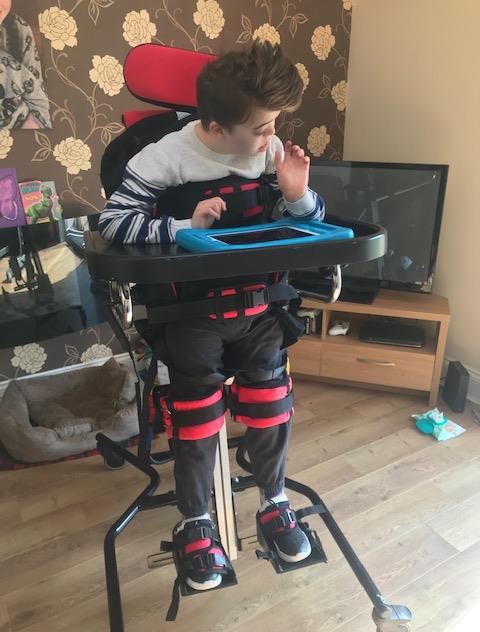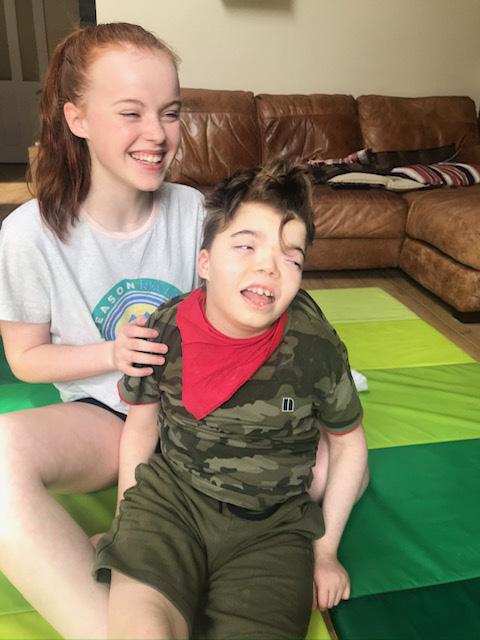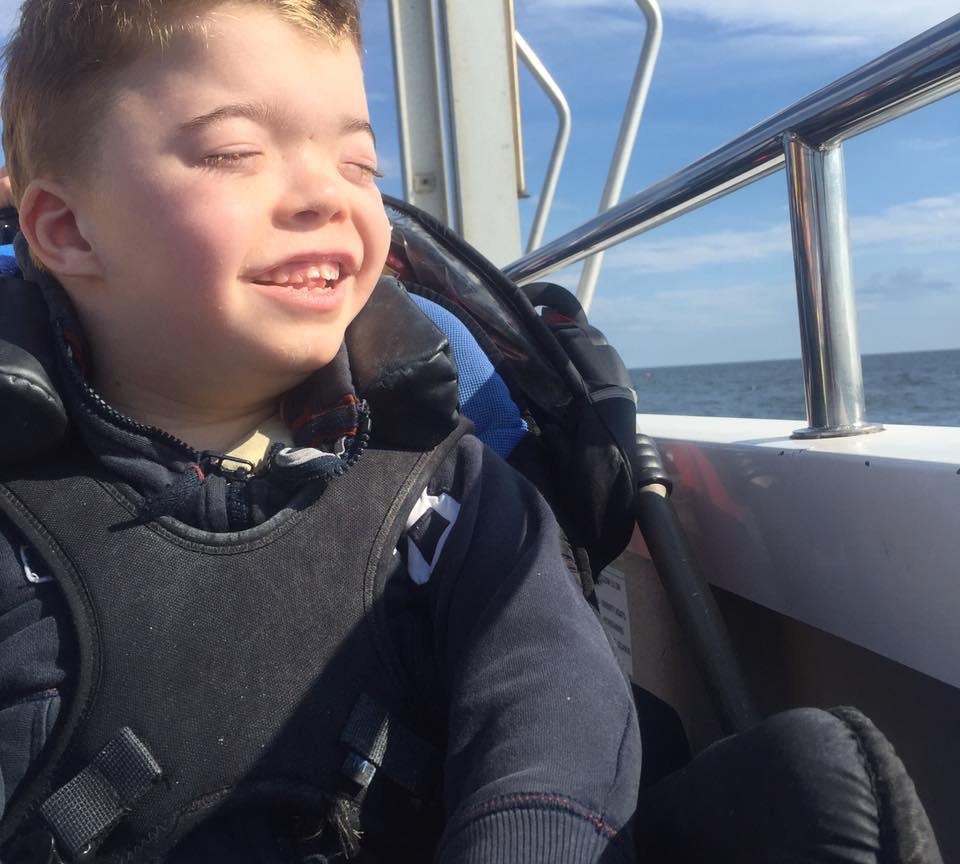
15 minute read
Nate and Rachel’s story
Nate is 10. He’s a happy, lovely little lad who loves music, Disney and The Avengers. He’s always on the go, walking the dog with the family, supporting his sister at football or splashing about at hydrotherapy or swimming. He has an extremely rare genetic condition and since birth we haven’t really known what to expect. Nate wasn’t diagnosed until he was nearly three and in those early years there was a lot of uncertainty. No-one who was involved with Nate knew what the future held and this had a big impact on what equipment he accessed and his care. In the beginning the focus was purely on survival. We had no idea then of the impact of postural care, nor how important it would be for him.
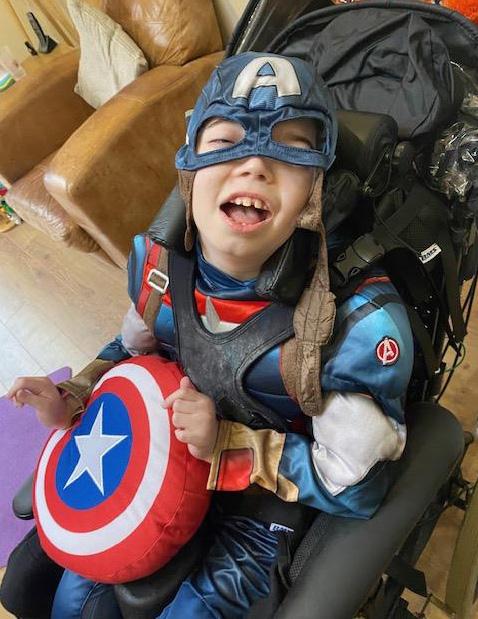
Advertisement
Our goal every day is for Nate to have the best quality of life he can possibly have. We definitely take some risks to enable Nate to have those experiences that other children do – sledging being the most recent example. It’s like living in a constant dynamic risk assessment. If we go on holiday as a family, we have to think ‘where’s the nearest hospital?’, ‘what can we access when we get there?’, ‘where can we change him?’, questions that other families don’t need to think about. Personal care on a long journey is still a huge challenge: although there is a gradual increase in service stations that have Changing Places facilities, they do seem to be predominantly in the south. It was always really important to us that we would still be able to do things as a family; but we have to be creative about how we involve Nate in all of that. Everything is planned to the letter.
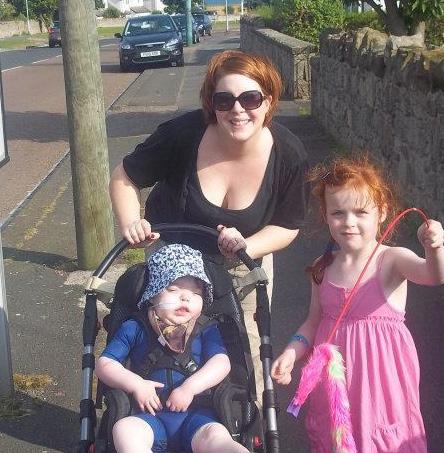
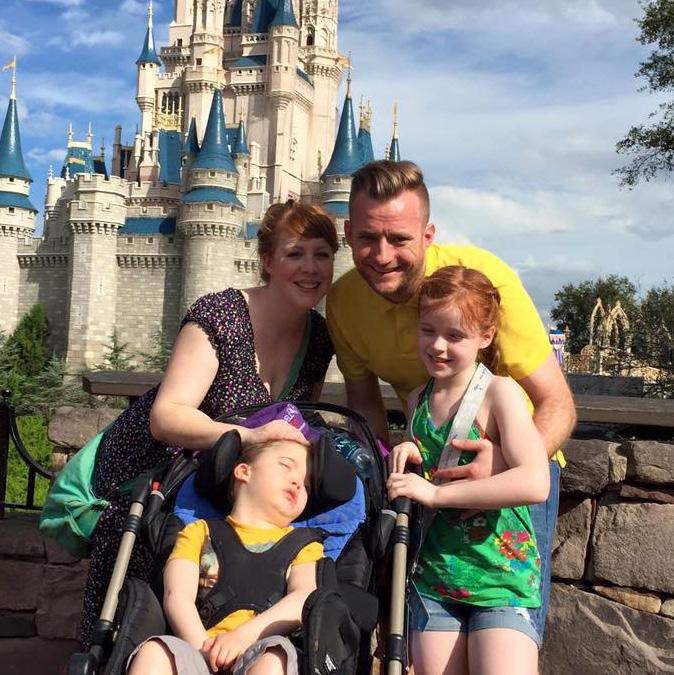
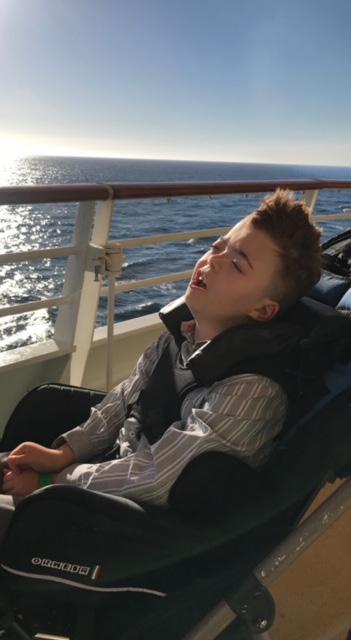
We’re quite a busy family, and over the years we’ve always been out and about. We love the beach, going to castles, exploring – all those things that a family with young kids enjoys doing together, so it’s really important that any equipment Nate has supports him to do this, which has been tricky. Even in the early days just getting him in the car safely and comfortably was a battle. Before we had a mobility car we had a normal car and we needed to find a car seat that wouldn’t obstruct his breathing. Because he was so floppy, lifting and twisting to get Nate into the car seat put increasing strain on our backs. We got to the point where he needed to travel in his wheelchair, but there were issues around the chairs not being crash tested to his weight and keeping his head up and supported. One solution was using a Hensinger collar; however, our wheelchair services weren’t keen. It often feels like professionals tell us what we can’t or shouldn’t be doing, but without suggesting actual solutions.
Sometimes you’ll find an adaptation that solves one problem but poses other difficulties. Take the beach, for example. Many coastlines are inaccessible with very steep ramps or steps. Two of our local beaches have started offering beach wheelchairs, which is amazing because we can get him right into the sea, but they are basic wheelchairs and with his tone we need to find a way to strap him in with appropriate support to sit upright safety while we bump him across the sand. We looked at getting a 3-wheeled chair for going off road, and tried one out but it wasn’t supportive enough. We would love to be able to find an appropriate chair to be able to increase Nate’s access to his environment and expand his horizons.
Early days
We’ve been on a bit of a rollercoaster when it comes to Nate’s health and care. He was really poorly in his first few years and spent a lot of time in hospital with chest infections. In those days, he would get better from one thing and then he’d face another problem with something else. We would have a gap in information for quite a long time, then be bombarded, and the next thing you know, it’s all wrong and you have to change things again.
I wish I’d known back in those early days what I know now. As a parent you become an expert in your child over time, but at first it’s such a steep learning curve. Before Nate started school, and even in those first few years of being in school, I didn’t understand the importance of posture. In hindsight it’s really difficult to remember how much we were told about positioning. Did professionals avoid the topic because they didn’t want to add to our stress? Was it because Nate wasn’t expected to live very long? Or was something lacking in their provision? Nobody was blunt enough to sit us down and say, ‘With how floppy he is, he’s probably going to end up with scoliosis and need surgery.’ Services in the community were so patchy that if you managed to pin one person down, they didn’t know Nate very well and we struggled for advice and resources.
Eventually we began to accumulate lots of equipment for different things, like a supportive chair with tray for eating (with a head rest that no one could get right for Nate’s breathing and feeding) and a profiling bed that helped with secretions at night to reduce chest issues. Throughout all of this, keeping straight wasn’t mentioned. These were pieces of equipment for other things entirely. It was time consuming and difficult to go through the process of getting an assessment and equipment. I remember having hoisting put in, and slings arriving but no one showing us how to use the slings, nor how to work out which loops to use! You felt like you were chasing services. Often there was a lack of experience within community services, or people managing huge caseloads and under increasing amounts of pressure. We were lucky to eventually have great people working with us and Nate.
But it shouldn’t be luck though, should it?
Clicking into place
When it came time to choose a nursery we found a special school that was starting to take nursery age pupils. It was such a friendly, nurturing environment with staff who were incredibly experienced in medically complex children. They had an open door policy, so we were always welcome as parents and you felt you could ask those questions and build up relationships with professionals over time. Consistency is so important for families like ours, those positive relationships mean you can discuss anything, no matter how difficult.
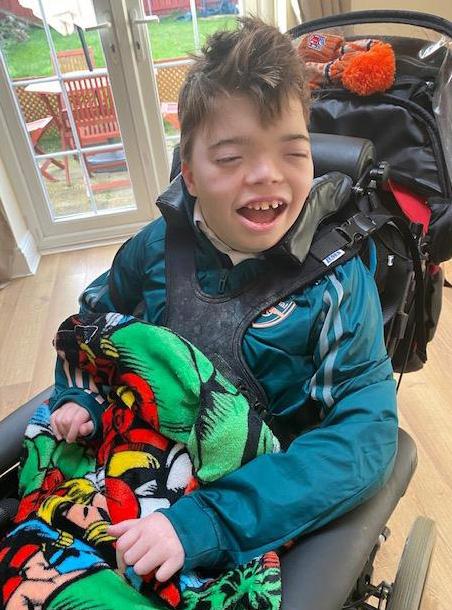
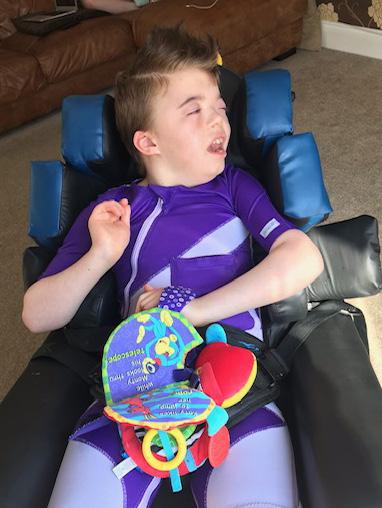
School was where we first heard about postural care finally in an explicit way. We met Frances Slowie, who was working as a physiotherapist with the school. Prior to this I didn’t even know postural care was a thing. They started to do postural assessments in school which made things clearer. Referral to the spinal team at our local hospital provided 6 monthly and then yearly spinal x-rays to monitor scoliosis and kyphosis. On-site physiotherapists and occupational therapists were invaluable. Those OTs don’t mince their words! As tired parents with a hundred other things on their plate, subtlety often gets lost on you. We’re so fortunate that Nate got into this school; they have been so helpful with liaising with the community teams about his equipment needs too.
Since then I’ve also started working at the school teaching teenagers with a label of profound and multiple learning disabilities alongside complex health needs. This has deepened my knowledge and understanding. It’s only been through observing body shape change over time in a professional context that I really understand what to expect as Nate gets older, and the importance of trying to prevent deterioration. I also understand even more that you can put all the support in place at school, but unless it’s followed up at home you lose that impact. It has to be a real collaborative effort between home, school and health services. Equally, for many of us, 24-hr postural care can feel impossible.
Struggles
Like all parents we’ve had a few challenges when it comes to doing the best for Nate. It’s a constant battle and a lot of waiting for funding approval. This has become been part and parcel of every aspect of Nate’s life for the last 10 years. It can take a long time to get money approved for something we know Nate needs. Nate has a paediatric bed, which he has outgrown. You would think that it would be straightforward to get the same bed in adult size but everything requires referral, evidence, assessment, and application to panel for funding. The OT who came out was fantastic and gave me an update a few weeks later to say the application was going to panel. I was stunned to get an update truthfully as usually we have to chase these things. Hopefully he has a new bed soon!
In the early days I didn’t know you had to really push and make yourself heard. I didn’t realise that if a professional says your child doesn’t need something, it might not be because they don’t really need it. It might be because the funding doesn’t stretch to that, or the professional isn’t an expert in that area. We have found that professionals in community based services are more experienced in general issues. When your child has needs that are a bit different and unfamiliar, professionals themselves can be at a loss as to what to suggest.
We have had to apply to charities for some pieces of equipment where local authorities have refused to fund them such as a specialist car seat. It can also be a struggle to try something new, like Nate’s lycra suit. Back when Nate was first assessed for one they weren’t very well known. Some clinicians don’t agree that they make any difference long term to spinal position as there isn’t much evidence, but I could see the difference when he wore it, and it was much easier to position him while wearing it. Subsequent funding applications were easier as we had evidence that it was working for Nate. If you’re breaking new ground with something the funding body haven’t seen before, it can be hard to make the case. Some things are easier, such as Nate’s sleep system as it was quite clear he needed one, the issue then came down to finding the right one that meets his needs.
This “complex” life
As a parent I’ve always been keen to try new things in the hope they will improve Nate’s quality of life. For many years he sat in a P-Pod, because it’s relatively affordable, it looks nice and it’s comfy. It’s what a lot of his friends would have had too. It wasn’t until much later we learnt it’s really not that supportive, but you just don’t know!
This “complex” life is quite complicated. Unless you know what you want equipment wise people aren’t forthcoming with what’s available. It’s frustrating. There could be a bit of equipment out there that’s far more appropriate for your child but they may not mention it to you, or perhaps they don’t know it’s there either. We’ve had to tell some professionals what we’ve found out from our own research. You hope that money doesn’t influence these decisions, but ultimately you know it does.
I want to try everything. When the Upsee came out, I was on that website hitting refresh over and over again to buy one. The website was crashing, but it was such a brilliant idea. It’s a harness so Nate could stand upright strapped to me and walk with me. When it arrived we were so disappointed as it just didn’t work for us. Nate’s inability to hold his head and trunk well put huge stress on my back. For the short time we were able to use one it was an amazing experience for Nate - dancing, walking and playing football in the garden with his sister.
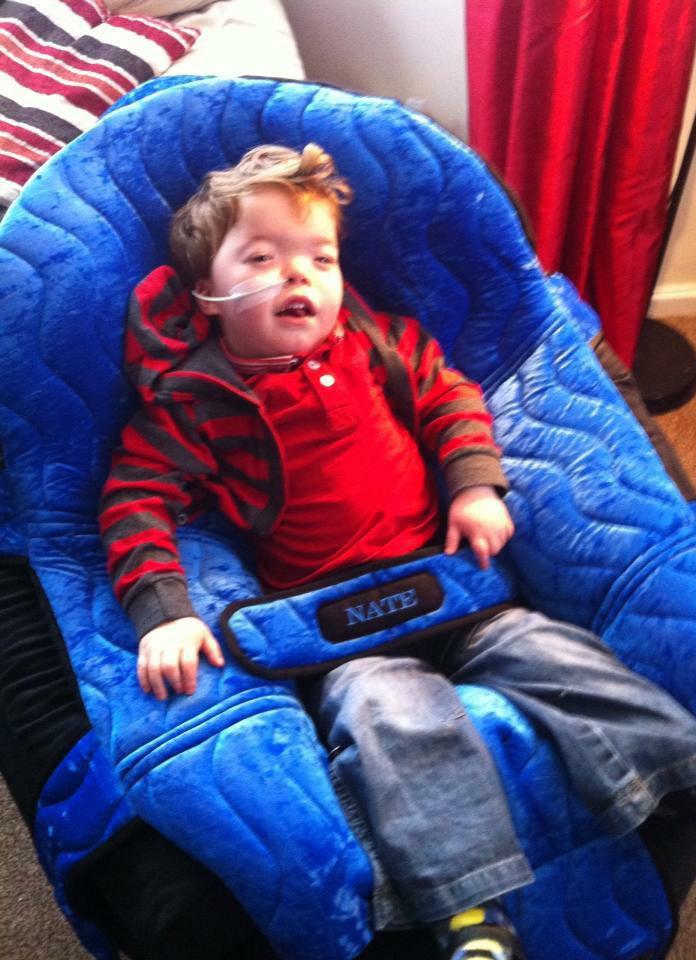
Above: Nate in his P-Pod Right: Nate’s current sleep system
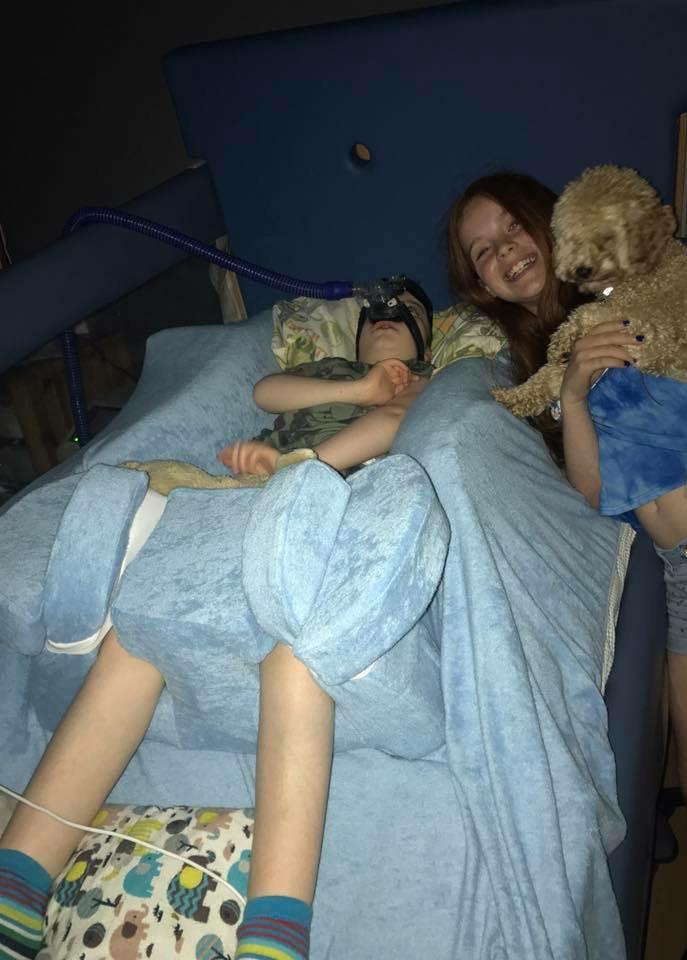
So at the minute Nate uses a sleep system, a wheelchair and a comfy chair with supports. He has moved from the P-Pod which was a bit too comfy, to something more structured. When he’s not in something supportive he’s on the floor having some freedom to roll and wiggle around. This is really important for his spinal health too. He can lie straight as an arrow when he’s on the floor and you look at him and think, ‘I never knew you could do that!’
The biggest challenge posturally over the last few years has been getting the right sleep system. Nate’s like Houdini - he can get out of anything! Our current sleep system is comfortable and he can’t get out of it (although Nate has recently started to shout and refuse to go to sleep until we take him out of it…). At first the sleep system was just to keep him in place as he got tangled in his wires and he would end up moving to the bottom of his bed, but now we know how useful it is for his spine too. He has a stander, which isn’t normally at home as it’s so big and heavy, but when lockdown hit his school sent it home so he could use it here. It hardly fits in the house!
Moving forward with Nate
With postural care you need to be prepared to try things, and persevere. It doesn’t mean you’re going to fix everything, it’s not a guarantee on preventing surgery but at least it can slow the rate of deterioration. Nate sees a specialist for his spine, and at his last two annual appointments the curve in his spine hasn’t changed. It’s still there, but it hasn’t got worse. This is all since we’ve been working on his posture a lot more.
It’s sad to say but as he’s getting bigger his life is becoming more limited. Things we want to do with him are more difficult, we can’t shy away from that. Even when going out with the family dog we have to think in advance where to go. Sometimes you research a place and then turn up and “Oh no! steps!” Getting him to football pitches so he can see his sister play can be challenging. They don’t half put football pitches in some weird and wonderful places! He loves swimming and there’s a pool on our street with a Changing Places toilet for him to get changed in, but they haven’t put anything poolside to help you get him in the water. Or you turn up and they’ve let a family go in the Changing Place to have more space. We definitely need greater understanding in our local communities about access.
It’s difficult to know what impact better postural care has had on Nate as changes over time can be subtle. This is why it can so often be neglected. I can’t predict what the spinal x-ray will show and whether the news will be good or bad. I dread those appointments for that reason (and for the work out getting Nate on the chair thing to have the x-ray itself). I know that spinal fusion is inevitable – he will need surgery at some point, but we’re putting it off for as long as possible by protecting his body shape. We just want to reduce any deterioration and this collaborative effort is well worth it, even if it doesn’t replace the eventual need for surgery.
The future for postural care
The importance of postural care needs to be made clear when our children are young. If families aren’t in the right place mentally to take information in, professionals must revisit the topic over time. Posture is the furthest thing from your mind when you’re just trying to keep your child alive. Be clear about what could happen with a child’s spine over time. Don’t suddenly bombard parents and carers with information- start that drip feed of information right from the beginning.
The fact that postural care needs to be a 24-hour consideration requires careful explanation. Also, you can’t do it all perfectly all the time. If it comes down to sleep vs sleep system, let’s be real, sometimes you have to choose sleep. Needs must, but you need the information to be able to make those decisions.
We are lucky Nate gets on so well with his postural care, but I know that many people can’t tolerate it, which must be incredibly difficult. There needs to be more awareness of what equipment works in different situations. New things are coming out all the time, it’s really important that therapists and parents know what’s out there. Some of the best experiences we’ve had are with the medical team around Nate who are fantastic about saying, ‘Have you got this?’ and ‘Have you heard of that?’
Advice for families
Accept that some of the stuff your child will need is going to be clinical and medical, but it will be useful over time. Accept that some of this stuff just looks shit. I know some families who have really jazzed up their child’s equipment because it just looks so ugly!
It is really difficult when you’ve got a really poorly child and you don’t know how long they’re going to live for, but try and be open minded and build your own knowledge base. Sometimes this is really hard to do. Those people you’ve left messages for, ring them back. Be prepared to chase things up because they won’t do it for you. Sometimes you feel like your child’s personal assistant. Get a diary! Take notes of who you’ve spoken to and what they’ve said they’re going to do. It’s no one’s fault, but therapists have big caseloads and don’t realise what a priority certain things are for parents and carers, and how much anxiety waiting causes. You can blink and 3 months have passed. Keep a note of their name, number, timescale, what’s going to happen next.
Explore, research and talk to other families. Persevere over time. If something’s not working don’t just abandon it, try other types of that thing, ask for help or new ideas. A lot of the time families feel powerless, but with more information we can push for things. Knowledge is power after all!
